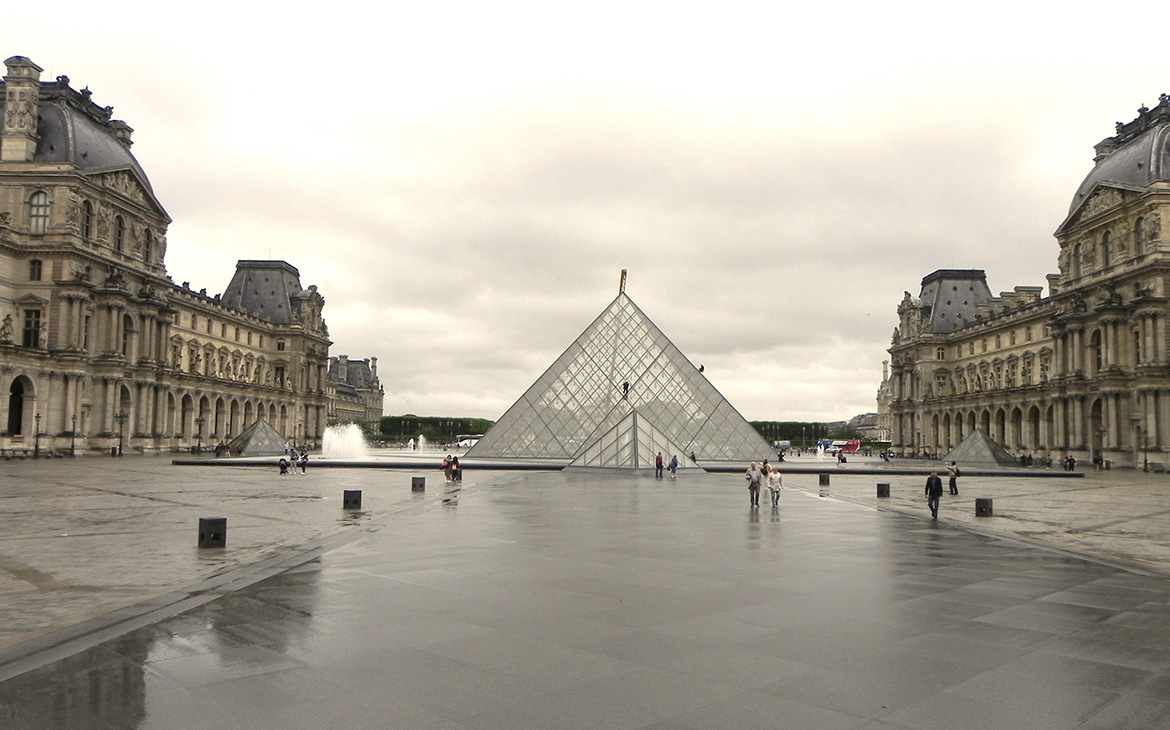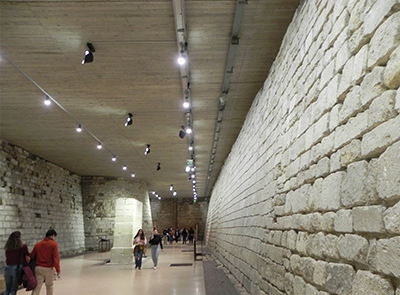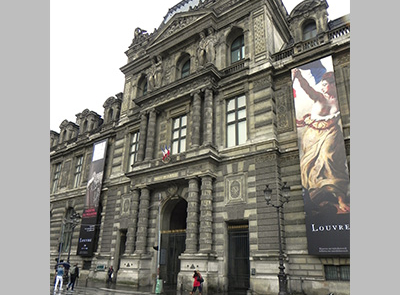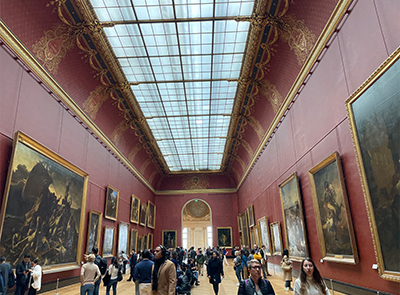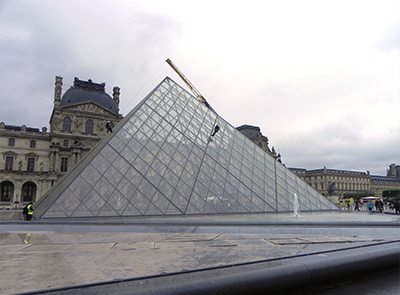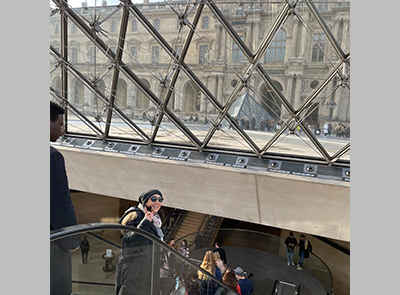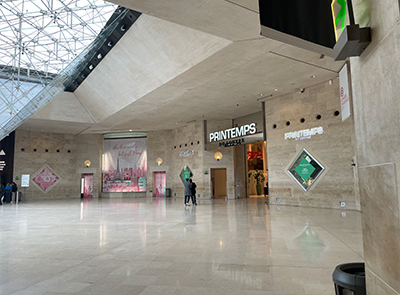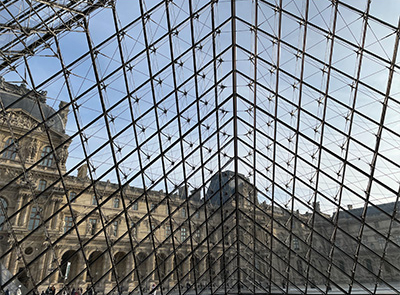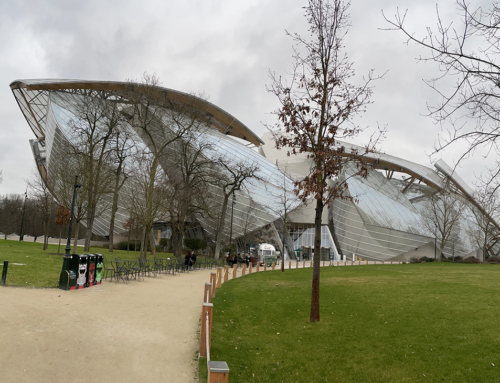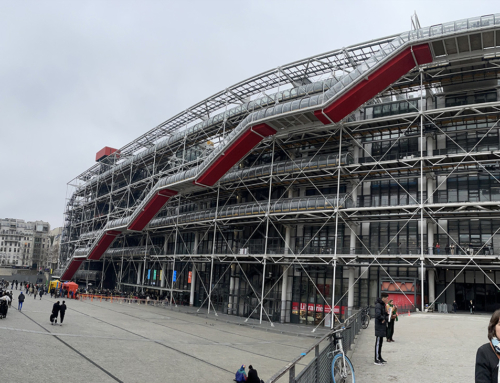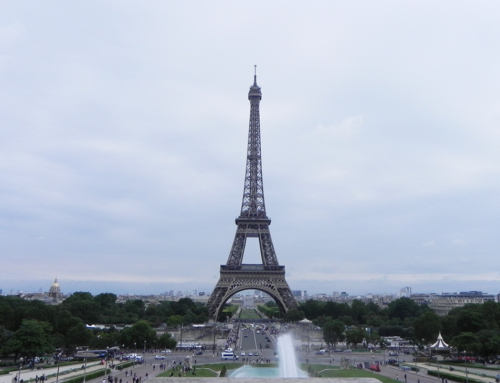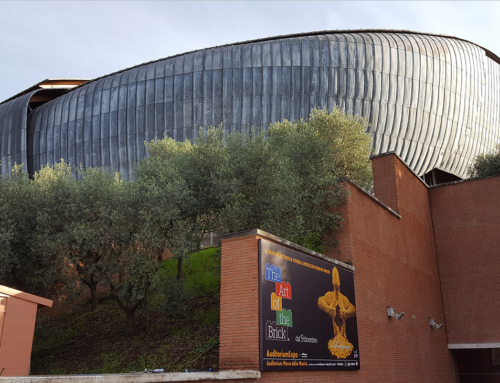
Continuing with the list of buildings that have caused controversy in Paris, one must talk about the Louvre Museum latest renovation, which is perhaps the most important one done in this century. However, before talking about this latest renovation, I should briefly touch on the history of this magnificent building, so that you can understand the context in which France viewed this prominent place. The first enclosed construction was a Middle Age Fortress (remnants are visible in the basement of the museum). Then in the 14th century this place became a Royal Palace and part of it was built on top of the old fortress. Later in the 16th century the Louvre Palace had a huge expansion turning the building into a symmetrical and beautiful complex characterized by the Renaissance style, especially on the facades decorated with classicism features. The palace continued to be expanded and renovated overtime and as a consequence other facades were built with giant Corinthian columns in French Baroque style. All the main interventions made to this palace were conducted by French architects under the orders of the different reigning Kings and Emperors. Their legacy is evident in each exterior and interior features. During the French Revolution the Louvre became a museum and a new main entrance on rue de Rivoli was open.
In 1981, the French President Francois Mitterrand announced his desire to modernize and dedicate the entire building as a museum, because at the time a portion of the palace was still used by the French Ministry of Finance.
With this goal in mind, he created the “Grand Louvre” plan for the renovation, extension and adaptation of the palace. To accomplish this goal, Mitterrand decided to commission the work for the first time to a non-French architect. He chose the American Chinese architect Leoh Ming Pei, to everyone’s surprise! Pei’s was aware of the importance of understanding the historical and cultural context, as well as the protection and conservation regulations around a world heritage buildings such as this one. So, before accepting this important commission, he asked for some time to study French culture and the history of the Louvre Palace.
Once he completed his cultural immersion, Pei and his team presented (in 1984) a proposal that focused on making the building more accessible and offering better accommodation to its visitors, while keeping its grandeur. With this principle in mind, he proposed to create a new main entrance to the museum in the middle of the Napoleon Cour. To achieve this, he opened the access from the west side of the plaza into a new underground space that was created and it covered with a gigantic iconic glass pyramid, which is perfectly aligned with the north, south and east wings of the palace.
This proposal ensured that the historical buildings were untouched. The new modern plaza composition which includes the central iconic glass pyramid and three other smaller pyramids around it and in perfect symmetry take visitors into the interior of it, where a long escalator on one side and a spiral stair on the opposite side take the visitors into the lower level, where the great central reception area, ticket office and visitor center are located. The pyramid is not only another attraction for visitors inside the museum, but it also provides daylight to the underground newly open areas.
The pyramid proposal was immediately considered an inappropriate architectural element. Parisians (and the entire world) were speechless and shocked about it.
Like the Eiffel Tower, the louvre pyramid was the subject of intense controversy, some of the critics’ comments included: “an eyesore,” “an architectural joke,” “an anachronistic intrusion of Egyptian death symbolism in the heart of Paris.” However, President Mitterrand understood the architectural intent Pei had in mind for the Louvre and the actual benefits that would bring to the museum complex and despite the criticism he gave the go ahead to proceed with the construction as designed by this American Chinese architect.
On March 29, 1989 the construction of the first phase of the new Louvre renovation was inaugurated by President Mitterrand, who was accompanied by an extraordinarily longline of people that were waiting to see the now famous pyramid and with it the criticism of the modern intervention ended. Four years later (in 1993), the second phase of the museum renovation (the largest underground extension) was completed and it was called the “Carrousel du Louvre”. This addition featured an inverted glass pyramid, new galleries, restaurants, shops and offices underneath the Cour Napoleon courtyard. It also provided parking areas for tour buses and a direct underground connection to a metro station.
.
I have admired Pei’s previous work, in fact he is one of my favorite architects, so my opinion about his Louvre design may be a bit biased but honestly the entire project is magnificent from multiple aspects.The fact that the existing facades of the Louvre were not touched or overshadowed by the monumental glass pyramid, was in my view the right way to modernize this historic Landmark building. I had the opportunity to visit the museum years before the expansion was made and the line to enter was extraordinarily long, and the general visit to the museum was not extremely comfortable. So, as soon as they finished the construction, I went to visit the museum again and I was pleasantly surprised. The glass Pyramid became the symbol of the Louvre and is the most visited museum in the world.
I would like to close this blog with a question: Are Innovative architecture projects the key to attracting more Tourism? or Are heritage buildings and sites the only way to do so?
In my next blog I will talk about the Centre Pompidou which is not comparable to the previous historical landmarks buildings, but it also faced scrutiny from the public. I hope you are enjoying this tour of my favorite museum.

